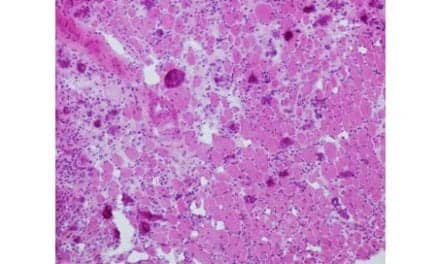Icahn School of Medicine researchers at Mount Sinai, which is part of the International Committee on Clinical Trials of MS, recently collaborated to re-investigate the standardized multiple sclerosis (MS) course descriptions originally published in 1996 and recommend refined phenotype descriptions. These phenotypes included improved clinical descriptive terminology, MRI and other imaging techniques, analysis of fluid biomarkers, and neurophysiology.
According to a news release issued by Mount Sinai Medical Center, the proposed revisions appear in the May 28 online issue of Neurology, the medical journal of the American Academy of Neurology.
The researchers’ goal in modifying the 1996 definitions centers on better characterizes MS patients and offering a framework for both clinical research and ongoing clinical care, explains Fred D. Lublin, MD, lead author, director of the Corinne Goldsmith Dickinson Center for Multiple Sclerosis at The Icahn School of Medicine at Mount Sinai.
“These revisions should make communication with patients and among physicians clearer and should also enhance the design, recruitment, and conduct of clinical trials, which will further help us understand the disease,” Lublin says.
The release notes that the 1996 clinical course descriptions provided standardized definitions for four MS clinical courses. These included relapsing-remitting (RR), secondary progressive (SP), primary progressive (PP), and progressive relapsing (PR). While the descriptions were believed to represent the spectrum of clinical subtypes of MS, it was recognized that the descriptions might change over time as a result of imaging techniques and biological markers, the release says.
When re-considering the prior MS disease course descriptions, the advisory group recommends that the core MS phenotype descriptions of relapsing and progressive disease be retained with some modifications. A consensus was reached indicating that disease activity detected by clinical relapses or imaging as well as progression of disability can be meaningful additional descriptors or either relapsing or progressing disease. Additionally, the release notes that evidence of disease activity and clinical progression, which by current understanding reflects ongoing inflammatory or neurodegenerative disease, may impact prognosis, therapeutic decisions, and clinical trial designs and outcomes.
The group goes on to recommend that to assess disease activity, annual clinical assessment and brain imaging for relapsing MS should be conducted. For progressive MS, annual clinical assessment is recommended, however the release states that no consensus was reached regarding the optimal frequency of imaging. Researchers suggest that progression be determined annually by history or objective measure of change. This in turn, suggests that the existing course descriptions should be sub-categorized based upon activity or progression.
The release reports that additionally, clinically isolated syndrome (CIS), which was not included in the initial MS clinical descriptions, yet is now recognized as the first clinical presentation of a disease that exhibits characteristics of inflammatory demyelination that could be MS, be included in the spectrum of MS phenotypes. Prospective follow-up of many such patients should determine their subsequent disease phenotype, researchers say. Radiologically isolated syndrome (RIS), where incidental imaging findings suggest inflammatory demyelination in the absence of signs or symptoms should not be considered a separate MS phenotype.
Lublin concludes that researchers’ understanding of MS had advanced much since the original phenotype classifications were standardized 18 years ago.
“Future long-term longitudinal and cohort studies, imaging studies, prospective follow up and research is needed to better understand and define MS phenotypes, allowing us to continue to refine the framework for clinical research and care for the patients who turn to us for help,” Lublin says.
Source(s): Newswise, Mount Sinai Medical Center




